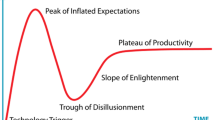The state assessment of remotely-controlled complex technical systems is considered. For this assessment, the authors used high-level digital twins generated through visualization technology. The paper examines modern visualization technologies (including virtual reality), which provide a means to perform various tasks for complex technical systems, such as interactive control and repairs. A scope analysis of visual models revealed that they can serve as either interpreters or simulators. This paper examines simulation models. Of note is that a higher number of properties taken into account when creating models increases their adequacy. Thus, in order to obtain highly adequate models, it is proposed to use current advances in visualization technology, which enables the evaluation of a large number of properties attributed to a real object (a complex technical system). The authors developed a procedure for assessing the state of complex technical systems, proposing an algorithm for the analyst designed to ensure the virtual presence of a specialist at the controlled facility, implement conventional testing techniques, and perform additional measurements when checking for failures. An example is given of how this procedure can be implemented in an interactive analysis and control system.





Similar content being viewed by others
Notes
GOST R 57700.37-2021. Computer Models and Simulation. Digital Twins of Products. General Provisions.
LabVIEW. available at: https://www.ni.com/ru-ru/support/downloads/software-products/download.labview.html#460283 (accessed: Aug. 2, 2022).
References
N. V. Rjabogin, G. A. Erohin, E. B. Pronina, and A. Ju. Koshelev, Model-Based Systems Engineering as a Basis for Development and Creation of Promising Space Systems and Complexes, Rocket-Space Device Eng. Inf. Syst., 7, No. 3, 51–60 (2020), https://doi.org/10.30894/issn2409-0239.2020.7.3.51.60.
A. El. Saddik, Digital Twins: The Convergence of Multimedia Technologies, 25, No. 2, 87–92 (2018), https://doi.org/10.1109/MMUL.2018.023121167.
A. S. Goncharov and V. M. Saklakov, Cifrovoj Dvojnik: Obzor Sushhestvujushhih Reshenij i Perspektivy Razvitija Tehnologii, in: Proc. of the All-Russian Sci. and Practical Conf., Kemerovo, October 11–14, 2018, T. F. Gorbachev State Technical University, Kemerovo (2018), pp. 24–26.
P. A. Stepanov, M. Ju. Ohtilev, and B. V. Sokolov, Visualization of Technical Status of Complex Objects Using Computational Models, Inf. Control Syst., No. 6, 132–135 (2017), https://doi.org/10.15217/issn1684-8853.2017.6.132.
D. A. Roshchin, Meas. Tech., 65, No. 3, 180–187 (2022), https://doi.org/10.1007/s11018-022-02066-9.
K. A. Suvorov, The Virtual Reality Systems and Their Use, T-Comm, 7, No. 9, 140–143 (2013).
A. A. Afanas’ev, Eng. J. Don, No. 4 (2014), available at: http://www.ivdon.ru/uploads/article/pdf/IVD_66_Afanasyev.pdf_da5aca6ae5.pdf (accessed: Feb. 15, 2023).
A. Yu. Potyupkin, Meas. Tech., 58, No. 2, 149–156 (2015), https://doi.org/10.1007/s11018-015-0677-3.
M. V. Egorceva, Metodika Ocenivanija Slozhnyh Tehnicheskih Obektov na Osnove Tehnologii Vizualizacii, in: Collection of Reports of the 16 All-Russian Sci. Conf., Moscow, March 13, 2018, Moscow State Psychological and Pedagogical University, Moscow (2018).
M. V. Egorceva, Obshhij Algoritm Ocenki Tehnicheskogo Sostojanija Obekta Kontrolja s Ispol’zovaniem Dopolnitel’noj Vizual’noj Informacii, in: Collection of Reports of the 14 All-Russian Conf. on New Technologies, Miass, October 10–12, 2017, pp. 112–120.
Author information
Authors and Affiliations
Corresponding author
Additional information
Translated from Izmeritel’naya Tekhnika, No. 2, pp. 12–18, February, 2023.
Rights and permissions
Springer Nature or its licensor (e.g. a society or other partner) holds exclusive rights to this article under a publishing agreement with the author(s) or other rightsholder(s); author self-archiving of the accepted manuscript version of this article is solely governed by the terms of such publishing agreement and applicable law.
About this article
Cite this article
Dolinina, M.V., Potyupkin, A.Y. Complex Technical Systems: State Assessment Procedure Using Visualization Technology. Meas Tech 66, 88–95 (2023). https://doi.org/10.1007/s11018-023-02194-w
Received:
Accepted:
Published:
Issue Date:
DOI: https://doi.org/10.1007/s11018-023-02194-w




